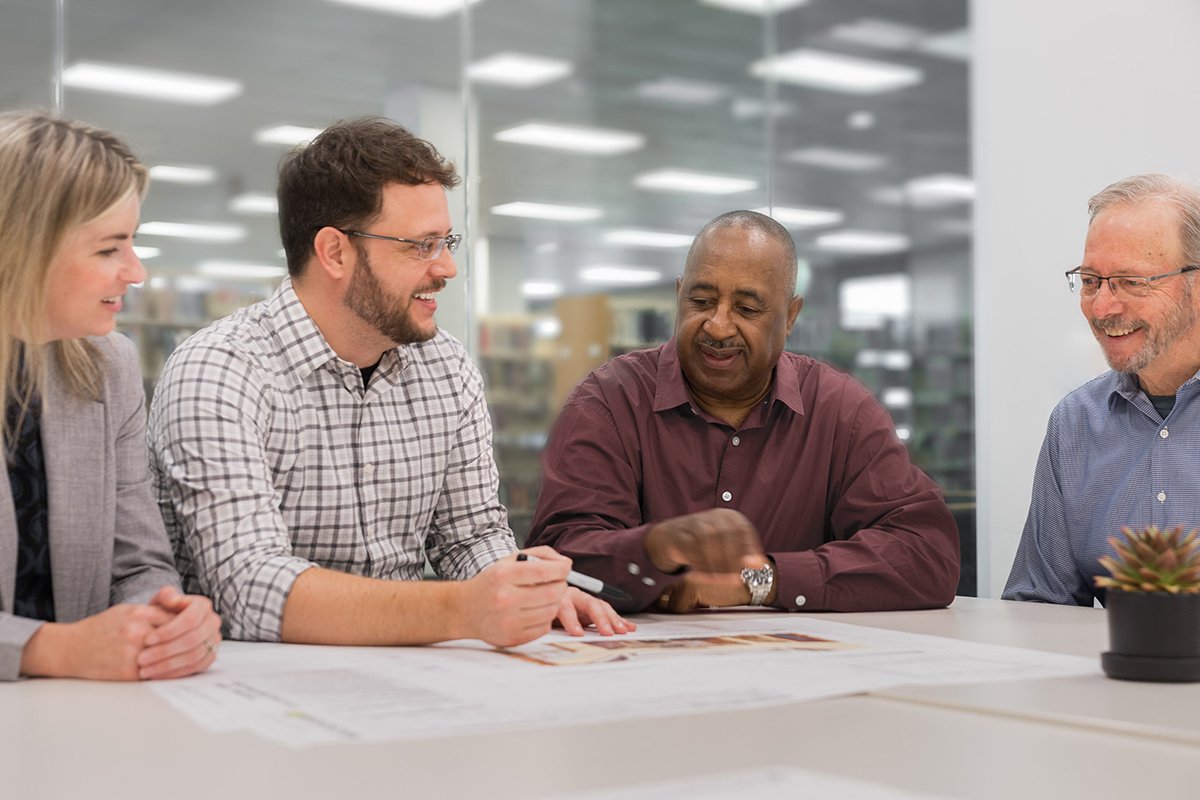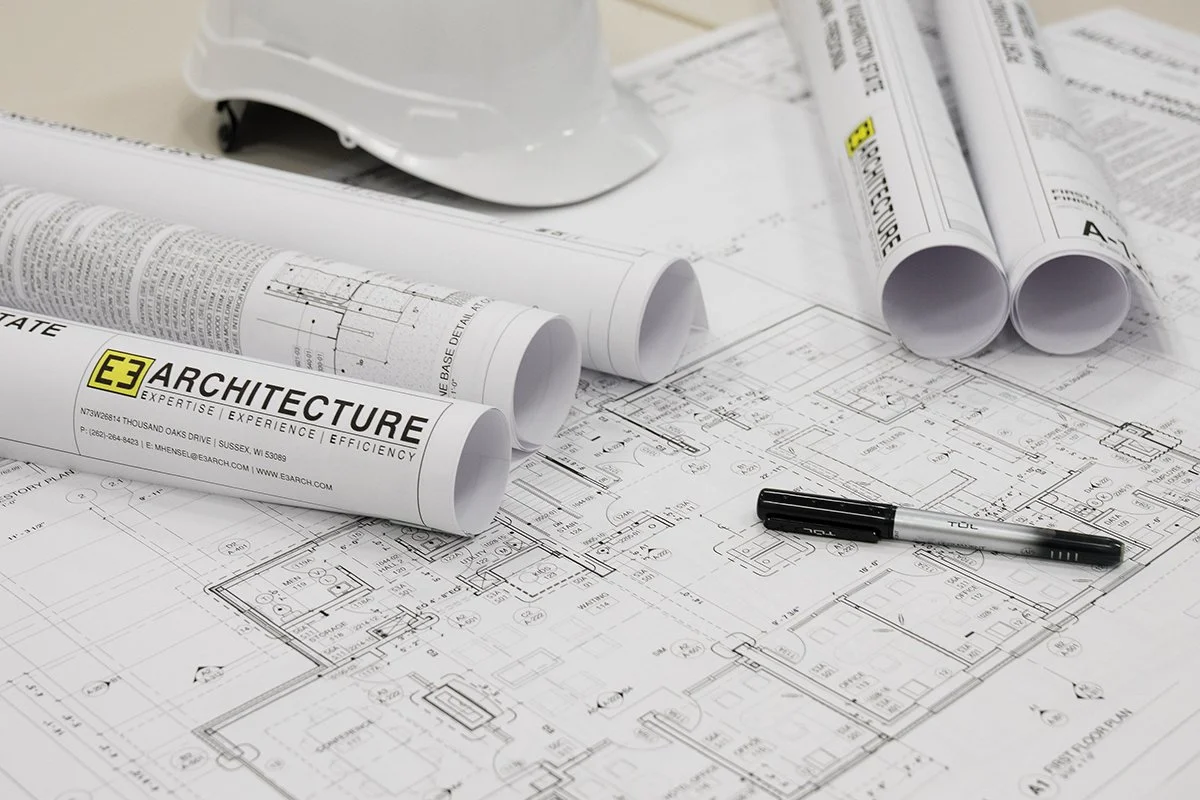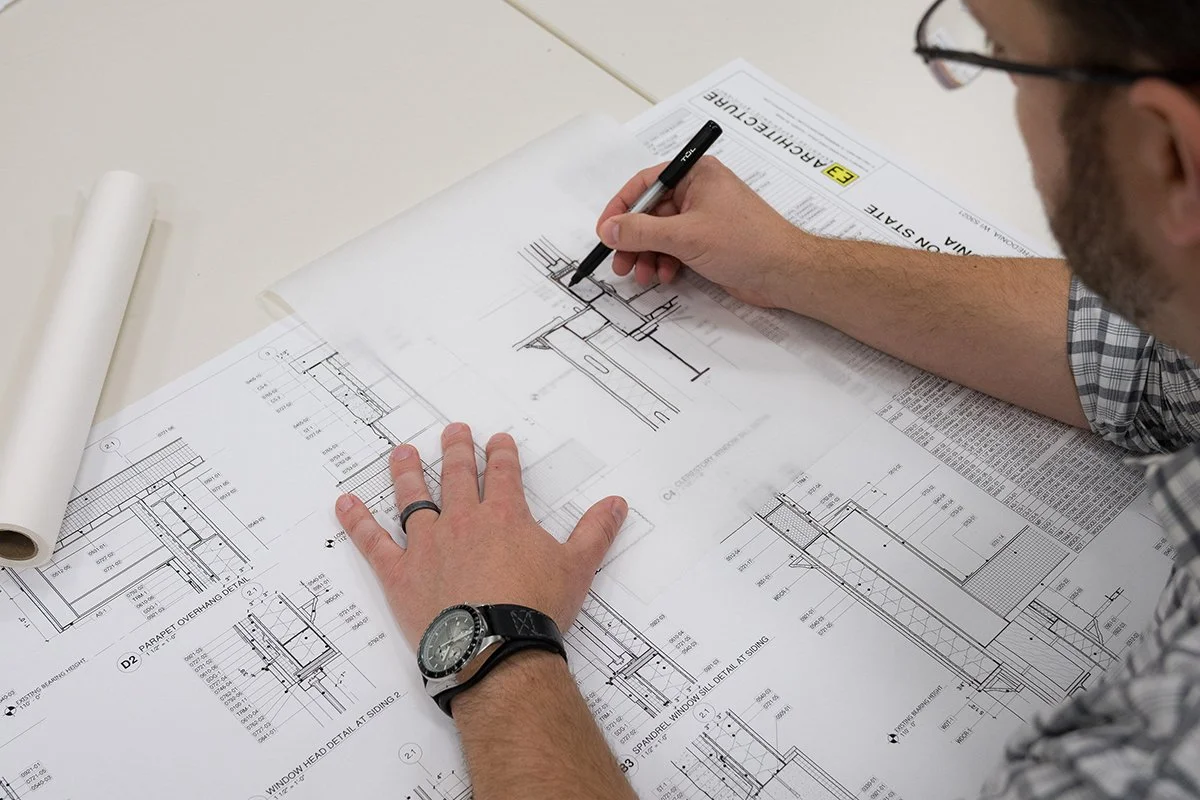SIMPLY PUT: A BLOG SERIES
5 COSTLY COMMERCIAL BUILD MISTAKES
(AND HOW SAVVY BUSINESS OWNERS AVOID THEM)
June 20, 2025 | 4 minute read
By Matthew Hensel
By Matthew Hensel
Building or renovating commercial workspace is one of the most complex and high-stakes investments that your business will make.
With high costs, tight deadlines, and critical decisions at every turn, even one mistake can lead to big consequences. And oftentimes, the fallout isn’t just financial. Ongoing operational disruptions, damage to your business’ credibility, and stalled growth are just a few of the possibilities. In this post, you’ll learn about five costly construction mistakes and what savvy business owners do to avoid them.
MISTAKE #1: NOT HIRING AN ARCHITECT SOON ENOUGH
1.1 How This Can Impact Your Project
When evaluating sites for your commercial project, you may come across a property that appears ideal at first glance; prime location, the right size, and an attractive price. However, hidden challenges can seriously impact your plans. Factors like zoning laws, setback requirements, ADA compliance, and utility access often go unnoticed until it's too late. Overlooking even one of these can derail your project entirely.
1.2 How to Avoid This Mistake
Hire an architect before making an offer to purchase property. A qualified architect can provide:
Zoning Research – Verifying that the intended use is allowed, and that setback requirements and other zoning regulations are accounted for.
Feasibility Studies – Assessing whether your vision for the project is both practical and legally permissible.
ADA Evaluations – Determining whether an existing building will require expensive upgrades like ramps or elevators to meet accessibility codes.
These services reduce the risk of hidden challenges impacting your project. Getting the right expertise on your project team early can be the key to identifying potential deal-breakers or discovering opportunities that others might have missed.
Wondering how to find the right architect for your commercial project? Check out this helpful guide: Selecting the Right Commercial Architect: A Step-By-Step Guide for Business Owners.
MISTAKE #2: SKIPPING REAL ESTATE DUE DILIGENCE
2.1 How This Can Impact Your Project
Due diligence is the process of thoroughly investigating a property before finalizing the purchase. But skipping real estate due diligence simply to save some money can expose your project to significant risks. Without proper investigation, easements, environmental contamination, or poor soil conditions can get overlooked and disrupt progress. These oversights often lead to costly redesigns, significant schedule delays, legal hurdles, or even project abandonment, turning what looked like a promising investment into a major liability. Due diligence isn’t just a formality, it’s your first line of defense against avoidable risk.
2.2 How to Avoid This Mistake
Recognize that thorough real estate due diligence is key to minimizing risk and protecting your investment. A well-rounded due diligence strategy often includes the following:
ALTA Survey - Confirms property boundaries and identifies easements that may restrict where improvements can be built on a property.
Environmental Assessment - Detects potential environmental hazards and contamination that can be very costly to remediate.
Geotechnical Report - Assesses soil conditions (such as weak soils or high groundwater) and guides appropriate foundation design—helping to avoid unnecessarily expensive construction.
Specialty Reports - Screen for hazardous materials like asbestos, lead paint, radon, and other substances that may impact safety or compliance.
MISTAKE #3: NOT ESTABLISHING A COMPLETE PROJECT BUDGET
3.1 How This Can Impact Your Project
Business owners often make the mistake of equating construction costs with total project costs, but construction is just one piece of the puzzle. Incomplete budgets often result in scope reductions, rushed decisions, or compromises in quality just to stay on track. It also makes it harder to secure financing, manage cash flow, or respond to unexpected challenges. In short, without a complete budget, even the most promising project can become a financial strain.
3.2 How to Avoid This Mistake
Establishing a complete project budget begins with defining the scope and tracking every expense category. In addition to construction costs, a comprehensive project budget should account for:
Financing Expenses - Interest and lender fees
Due Diligence Efforts - Surveys, environmental assessments, geotechnical reports, etc.
Consultant Fees - Realtors, lawyers, architects, engineers, etc.
Regulatory Fees - Zoning approvals, building permits, etc.
Furniture + Equipment Costs - Desks, chairs, copiers, etc.
Contingency Funds - Allocate 5-15% of the total budget to cover unforeseen issues such as material cost fluctuations, or site complications.
Treat your project budget as a living document. Review it whenever scope, bids, or market conditions change. And regularly update your estimates and make adjustments as needed to keep the costs aligned with your project goals.
MISTAKE #4: NOT HIRING A CONTRACTOR SOON ENOUGH
4.1 How This Can Impact Your Project
Unfortunately, it is all too common that the general contractor is not brought onto the project team until after the design is already finalized. But waiting that long to hire a general contractor for your commercial project can lead to unnecessary challenges, including a higher risk of budget overruns, design features that are difficult to construct, and schedule delays that could’ve been prevented with better coordination from the start.
4.2 How to Avoid This Mistake
Keeping your construction costs aligned with project goals is critical. And that alignment should begin at the earliest stages of design. A qualified local general contractor brought on at the beginning of a project can provide:
Accurate Cost Estimates - Based on current market conditions and accounting for material cost fluctuations.
Schedule Insights - Pinpointing long-lead items and minimizing their impact on the project timeline.
Value Engineering - Recommending alternative materials or methods that balance performance and cost.
Constructability Reviews - Identifying complex design details and suggesting simpler assemblies.
While architects bring creative and technical expertise, general contractors provide the essential cost and constructability expertise necessary to help design a successful project.
MISTAKE #5: IGNORING LONG-TERM OPERATING EXPENSES
5.1 How This Can Impact Your Project
Commercial construction projects are major financial investments and it can be very tempting to cut initial costs by opting for cheaper systems and materials. But this strategy usually backfires by driving up a building’s long-term life-cycle costs. Inexpensive HVAC and lighting are often less efficient and wear out faster, leading to higher energy bills and more frequent repair or replacement cycles. Likewise, lower-grade finishes often require more frequent maintenance and replacement. What feels like a short-term savings quickly turns into years of higher costs and ongoing maintenance headaches.
5.2 How to Avoid This Mistake
When planning any project, balance upfront expenses with long-term operating costs. Collaborate with your architect, contractor, and maintenance team to choose durable, energy-efficient systems and materials that might cost more initially but will reduce your utility and repair bills for years to come.
RELATED POSTS
Selecting the Right Commercial Architect: A Step-By-Step Guide for Business Owners
Learn how to set your project goals, find and screen candidates, ask the right questions during interviews, and then choose the best architect for you and your business.
Productivity by Design: 5 Must-Know Tips for a High-Performing Workspace
Discover how E3 Architecture helps business owners design smarter workspaces that drive focus, reduce distractions, and elevate team performance—because productivity starts with the space you create.
Maximizing the Value from Your Architect: 5 Essential Tips for Business Owners
Boost your project's ROI with these 5 tips. Learn how active participation, early architect engagement, budget transparency, pre-design planning, and 3D visualizations can unlock your architect’s full value.




